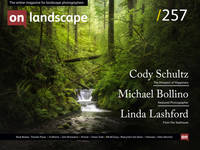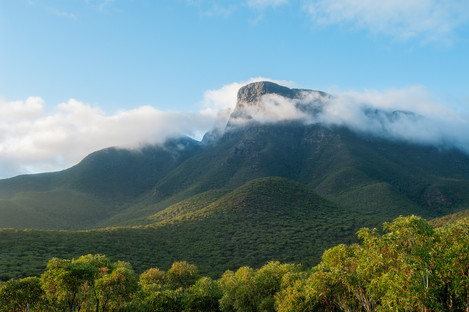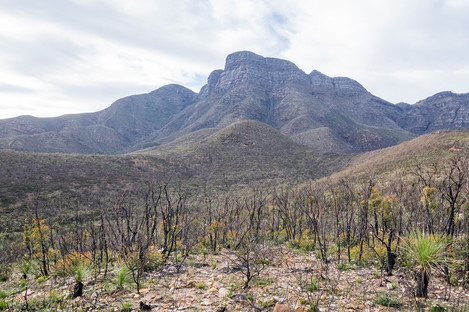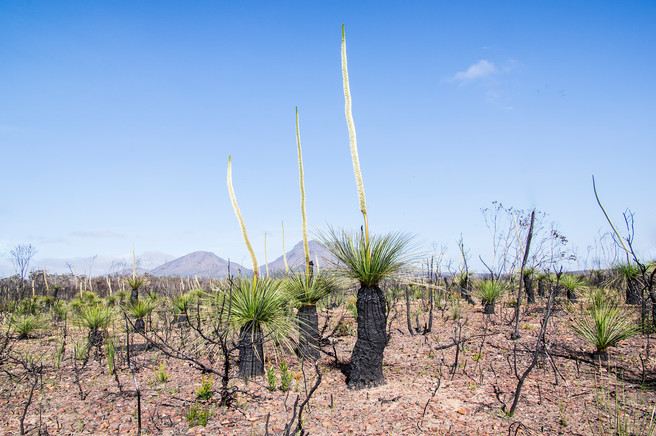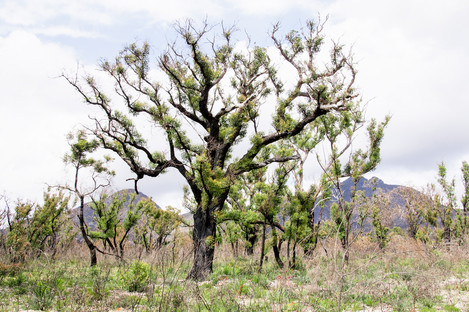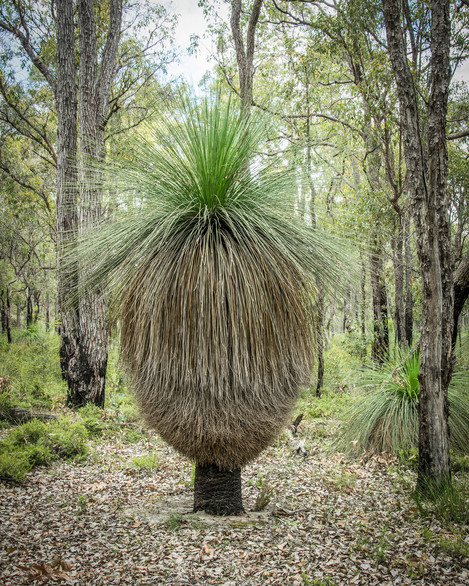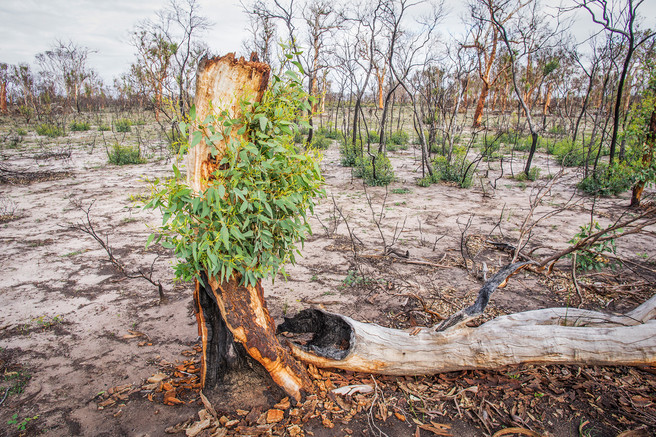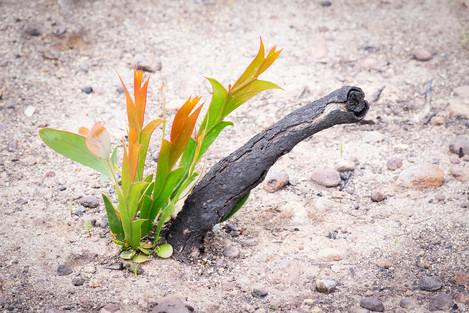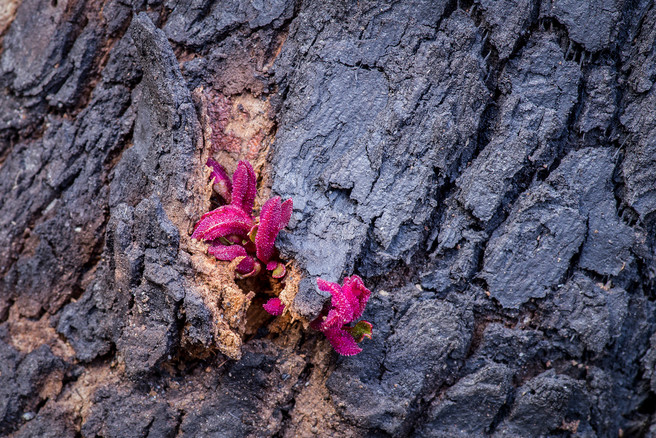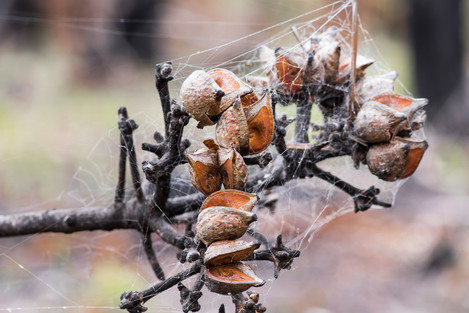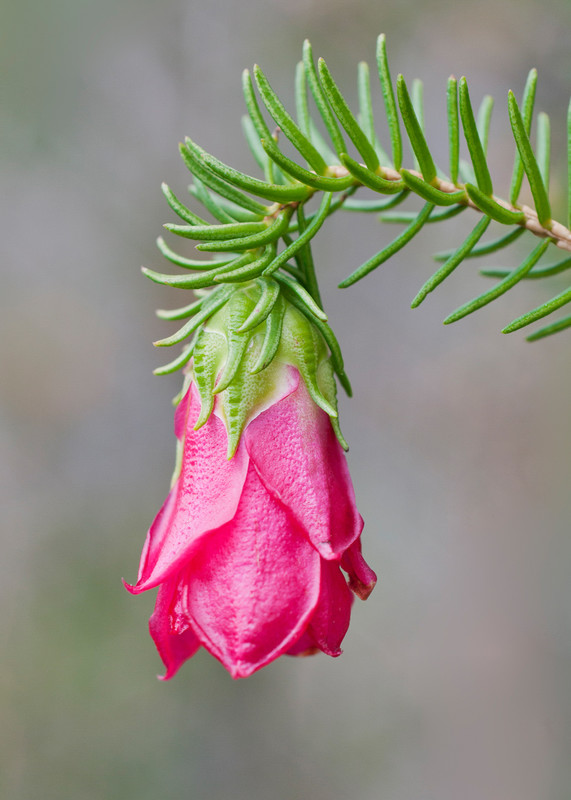A perpetual state of flux

Bill McClurg
I've had a lifelong love of nature and been interested in photography since my teen years. However for a great many years photography was put on the back burner, but acquiring a DSLR rekindled my enthusiasm. I find that photography enriches my experience of the natural world by slowing me down and allowing me to notice the smaller details I might otherwise miss. These days my photography is mostly about the smaller details in the landscape rather than the grand vista. My particular passion is photographing wildflowers and fungi.
Australia is the driest and most fire-prone continent on Earth and every summer bushfires sweep across the landscape. The 2019-2020 bushfire season was amongst the worst the country has experienced and has become known as “Black Summer”. Millions of hectares of bush were ravaged by fires, some burning for months. The fires resulted not only in the loss of many human lives, but also it has been estimated-the lives of billions of animals (mammals, birds, reptiles and frogs) and trillions of insects. It will take years for the environment to recover, and more than likely never to anything resembling its former state.
While the major fires were largely confined to the eastern states of Australia, my home state of Western Australia was not immune. Of particular concern to me was the fire that swept through the Stirling Range National Park in the southwest of Western Australia, not only because it is a landscape I love, but also because I knew the threat it posed to its many unique floral species.
The fire was started by a lightning strike during a dry thunderstorm on Boxing Day 2019. It was an intense fire, creating a huge pyrocumulus cloud that could be seen over 80 kilometres away as it burned its way through the landscape. It took over 200 firefighters a week to bring it under control. By the time it had finished sweeping its way across the landscape it had burnt through 40,000 hectares of the Park’s 116,000 hectares of pristine bush.
The Stirling Range National Park is located in the southwest corner of Western Australia, 400 kilometres south of Perth, the state capital of Western Australia, where I live. The southwest of Western Australia is an internationally recognised biodiversity hotspot with high levels of endemic plants. The National Park is a world renowned wildflower wonderland and every wildflower season it attracts thousands of wildflower enthusiasts from around Australia and overseas. People come not only to enjoy the amazing variety of wildflowers found there but also to immerse themselves in the wild beauty of its magnificent mountain scenery.
The Stirling Range was named after the first British Governor of Western Australia, Sir James Stirling, in 1835. But the local indigenous people, the Noongar, know these mountains as Koi Kyeunu-ruff - meaning “place of ever moving about mist and fog”. This is surely a fitting name for the “Stirlings” which are renowned for the unusual cloud formations that frequently form around the summits of the higher peaks even when the rest of the sky is clear. Perhaps it was this phenomenon that prompted a local newspaper in 1937 to describe the Stirlings as the “Mountains of Mystery”.
The Stirlings are not a true mountain range, but rather a series of isolated hills and peaks. At 1,095 metres, Bluff Knoll is the highest peak in the Range. While not high by world or even Australian standards, the way the jagged peaks of the Stirlings rise abruptly from the surrounding plain of the West Australian Wheatbelt makes them appear much higher than they actually are. It is the only major mountain range within the southern half of Western Australia, and the higher peaks are the only place in Western Australia where a light dusting of snow occasionally falls. It is a mountain landscape devoid of great rivers or lakes, having only seasonal creeks and a few salt lakes on its fringes.
The Stirling Range was declared a National Park in 1913 at a time when the surrounding bush was being cleared for agricultural land. The Park encloses the entire Stirling Range mountain system which extends over 60 kilometres from east to west and 30 kilometres from north to south. Today it forms an island of undisturbed pristine bush set amidst a sea of cleared farmland.
There are over 1,500 plant species growing within the Park’s borders. That is more plant species than are found in the entire British Isles. More than 80 species are endemic, meaning they grow nowhere else in the world. Over 100 orchid species have been identified in the Park, around 40 percent of all the orchid species known to occur in Western Australia. No wonder a botanist has described it as “a coral reef out of water”.
The mountain bells (Darwinia sp.) are perhaps the most famous of all the endemic plant species growing within the Park. These showy shrubs only grow above the 300 metre contour level. Of the ten species that are known, nine of them are only found in the Stirling Range and with some species even confined to individual peaks. Rather than a single flower, the “bell” is in fact a cluster of hanging flowers enclosed by large colourful petal-like leaves referred to as “bracts”.
I usually make several trips to the Stirlings every year, mostly in spring and early summer when the wildflowers are in bloom as photographing wildflowers is one of my passions, my main one photographing fungi. (Yes, even though I subscribe to On Landscape, I am mainly into close-up nature photography!). But I also love visiting the Park in winter when the peaks are often covered in swirling mist and the landscape takes on an ominous atmosphere that makes you feel that these truly are “mountains of mystery”. But perhaps, most of all, it could be because misty mountain tops remind me of my native Ireland. A touch of “hiraeth” perhaps?
But I don’t only go to the Stirlings for the photographic opportunities on offer. I also go there to immerse myself in its wild, rugged mountain landscape and to be at one with nature. It is a place that feeds my soul; a place where I can clear my mind of all the accumulated clutter I acquired back in the built environment and quieten my inner thoughts enough to engage in meaningful creative work. It is a place where I can think with clarity that’s not possible back in the built environment with all its distractions constantly making demands on my attention.
In 2020 I made my first trip to the Stirlings some eight months after the fire. Driving towards the Park along a road bordered on either side by lush green farmland left me unprepared for the full extent of the devastation that was about to unfold. As I drew closer to the Park I could see that the fire had swept over the summits of even the highest peaks.
As I entered the Park, what had once been thick mallee bush on either side of the road was now only its blackened, charred remains. Surveying the fire scarred landscape all around me the devastation was well beyond what I had imagined. Even though I had seen images of the aftermath of the fire in the media it had not prepared me for what now lay before me. Of course, I was only witnessing the destruction the fire had wrought on the vegetation, but no doubt countless animals would have lost their lives. Given all that had been lost, it was impossible not to feel an immense sense of grief.
When viewing such devastation it is difficult to accept that it is all part of the natural cycle and has been happening for millions of years; a reminder, if one is needed, that the landscape is in a perpetual state of flux. But, given time, just as it has done many times in the past, the environment will recover, although it will probably be changed forever. Indeed looking around me I could see that the rejuvenation process had already begun, for amidst the blackened, charred remains, fresh green shoots were already rising from the ashes. But this did not surprise me since Australia’s flora have evolved with recurrent fires over millions of years and have developed strategies to ensure their long-term survival. In fact, some plant species are reliant on fire for flowering and seed release.
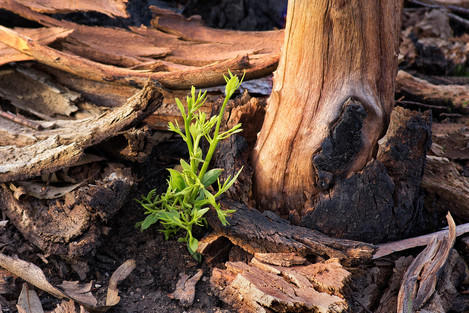
This tree has shed the thick bark that has protected its trunk from the heat of the fire and is resprouting from a lignotuber
Grass trees (Xanthorrhoea species) are amongst the first species to recover after a fire. They retain their old dead leaves which form a “skirt” around the trunk that helps protect it from the heat of the fire. While not wholly dependent on fire for flowering, it stimulates the plant to flower and set seed. Their new leaf growth and white flower spikes can be seen dotting the blackened landscape soon after a fire. Their long cylindrical flower spikes can be up to three metres long and contain thousands of tiny flowers. They are extremely slow growing and many of the plants in the included images would be hundreds of years old and have survived many fires.
Plants that are not killed by fire resprout from either lignotubers or epicormic buds. Lignotubers are below ground rejuvenating buds that can sprout new growth from the plants root system which has survived the heat of the fire. Plants that regenerate from lignotubers can survive many fires. Epicormic buds are dormant buds that are protected from the heat of the fire by lying deep beneath the thick bark of a stem, branch or trunk of woody shrubs or trees. They produce leaves that enable the plant or tree to photosynthesise after it has been defoliated by fire. This new growth can be seen growing up the side of tree trunks or their upper branches soon after a fire.
Plants that are killed by fire rely on seeds for regeneration. The seeds are either stored on the plant or a seed bank in the soil that is insulated from the heat of the fire. Seeds that are stored on the plant are enclosed in hard woody fruits that require the heat of a fire to stimulate fruit opening and seed release. After germination, the seedlings need to be able to reach maturity before the next fire in order to produce seeds. If there is too short an interval between fires then the seedlings will not have matured enough to produce seeds and there will be no next generation.
Some of the mountain dwelling species are slow growing and can take as much as ten to fifteen years before they are mature enough to produce seed. This is the case with the mountain bells which rely on seeds for regeneration and are slow to mature. This puts them at risk of extinction if there is too short an interval between fires. With the drying climate, particularly in the southwest of Western Australia, this is already happening. The bushfire season is lasting longer and fires are not only becoming more frequent but also more intense.
What really stood out amidst the blackened landscape was the huge number of ground dwelling orchids that were in flower. A park ranger who has been in the Park for over ten years said that it was the best year for orchids he had ever seen. It is common for orchids to flower in large numbers following a summer bushfire, something many orchid enthusiasts eagerly look forward to.
Orchids have adapted to fire by remaining dormant during the warmer bushfire prone months and only start to emerge in late autumn and early spring. They can survive many fires as their reproductive organs (tubers) are located underground well insulated from the heat of the fire. By flowering and producing seeds soon after a fire, there is less competition from other plants and a nutrient rich bed of ash for the seeds. Interestingly, there are some orchid species that will rarely flower without fire and in its absence will only produce a leaf.
I returned to the Stirlings in the spring of 2021, a year since my last visit and just over a year and a half since the fire. The regrowth was still underway but it was obvious that it was going to be a great many years before the environment is restored to anything in the least resembling its former state and, given my age, probably not in my lifetime. There were still large patches of earth devoid of any form of vegetation making it susceptible to erosion and weed infestation. Just as in the previous year, there were huge numbers of orchids in flower and they were very easy to spot in a landscape still largely devoid of undergrowth.
While the flora is slowly recovering it will be many years before the burnt areas are fully recolonised by animals. I only saw a few emus and kangaroos in the burnt areas during my trips, but as most Australian animals are nocturnal this was not really surprising. Unfortunately, as native animals start to move into the now more open landscape they will be highly susceptible to predation by the introduced European red fox and feral cats. Feral cats and foxes are threatening the survival of hundreds of Australian native species that have not evolved with these predators. They are already responsible for the extinction of some ground dwelling birds and small to medium-sized animals.
At the time I made my trips to the Stirlings (in 2020 and 2021) Western Australia had closed its border to interstate and overseas travel to help contain the spread of COVID (which it did very successfully). This meant that Western Australians who would normally have travelled interstate or overseas could now only travel within the state. This resulted in a huge increase in visitors to the Park with one report saying numbers had increased by more than 150 per cent. Many of these visitors were people who would not normally have visited the Park if other options had been available. I am not sure what impact this increase in visitor numbers has had-if any-on the environment as many of these visitors were not the environmentally aware, or outdoor type (given the increase in the number of mountain rescues).
But it is not only fire that is threatening the unique flora of the Stirling Range. It is also under threat from “Dieback disease”, a plant disease caused by the soil-borne fungus Phytophthora cinnamomi. It infects the root system of plants eventually killing them.
Even though I have been deeply saddened by the devastation that the fire has caused to a landscape I love I still relish my time immersed in the wild mountainous landscape of the Stirling Range. Our modern way of life has severed our connection with the natural world which is why we need wild places such as this where we can reestablish that connection and once again experience oneness with nature. We must ensure the preservation of these wild places, not only as a refuge for the non-human life forms that depend on them for their survival but also as a refuge for humankind from the artificiality of modern life.

